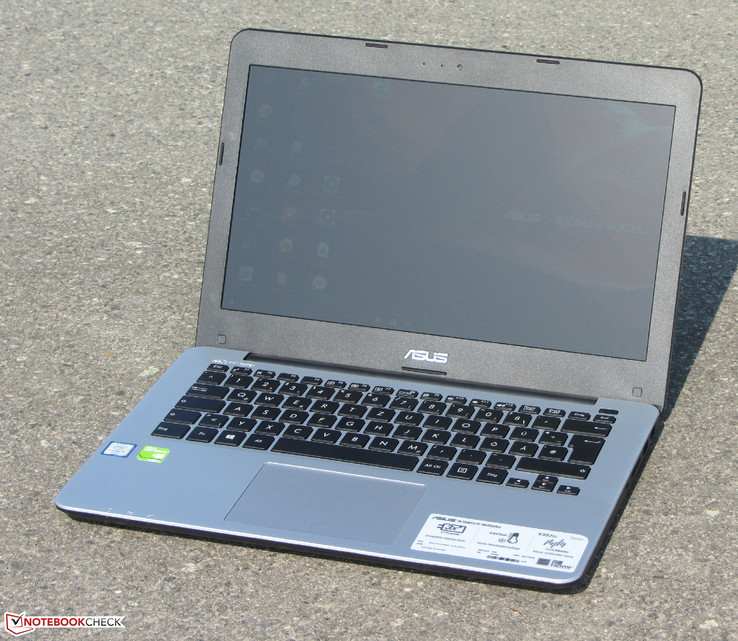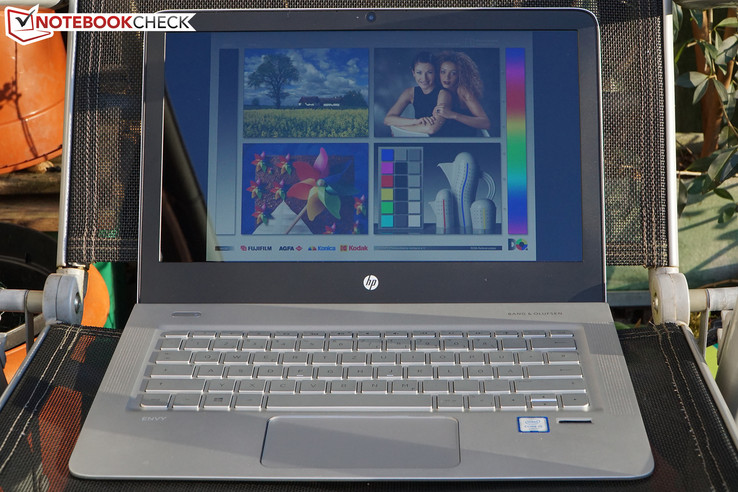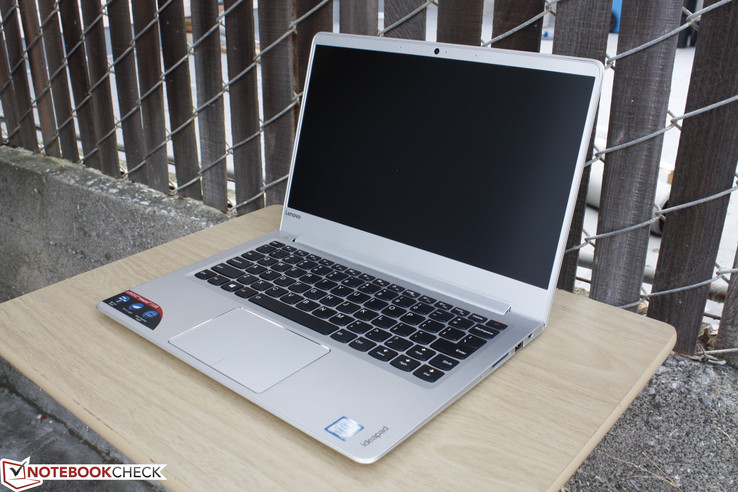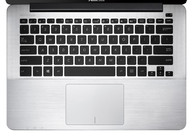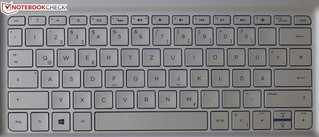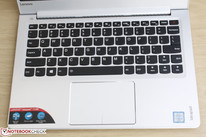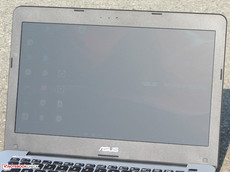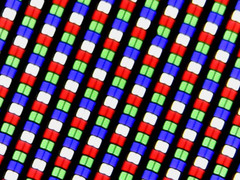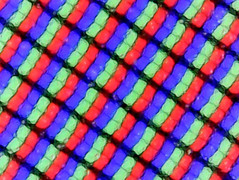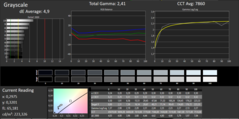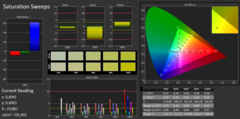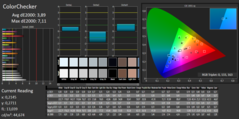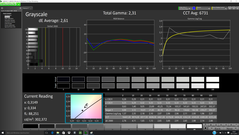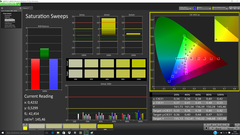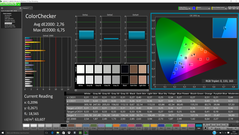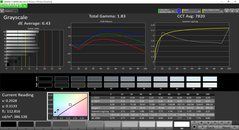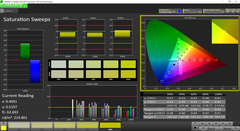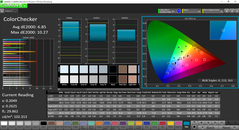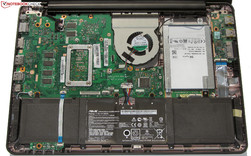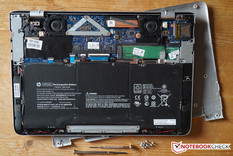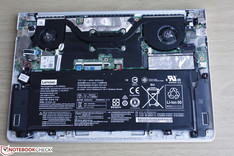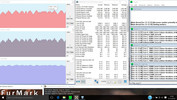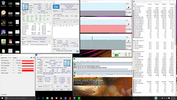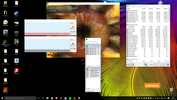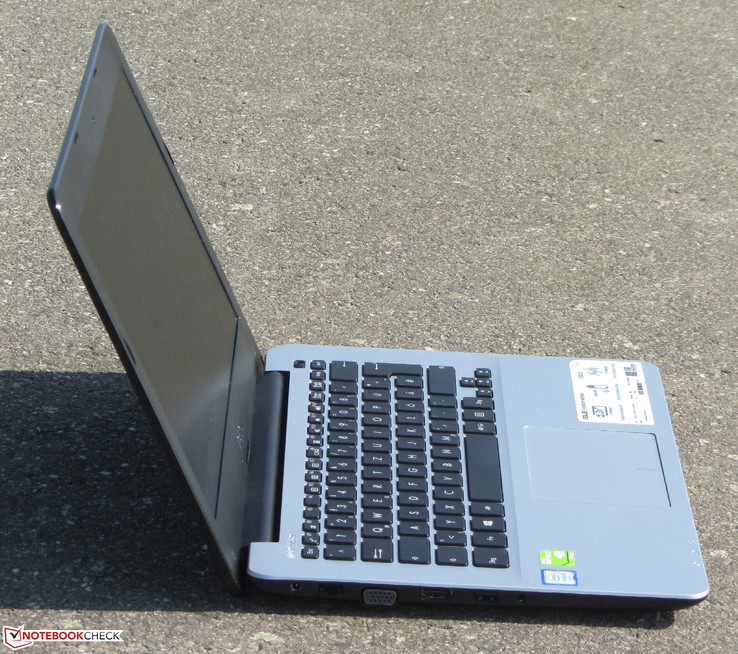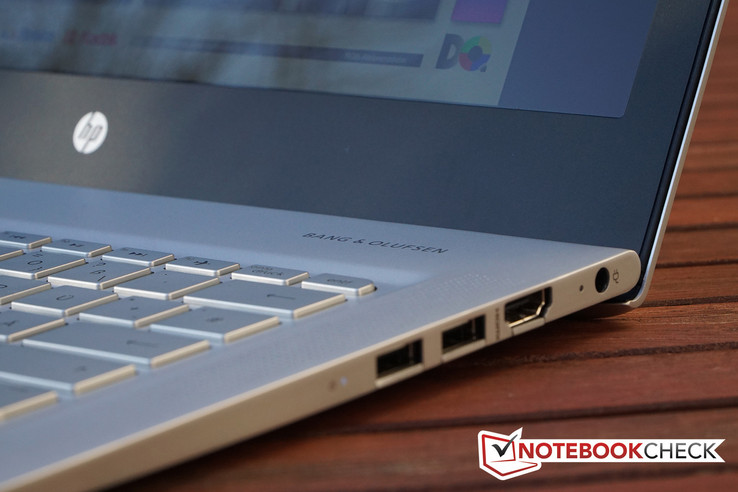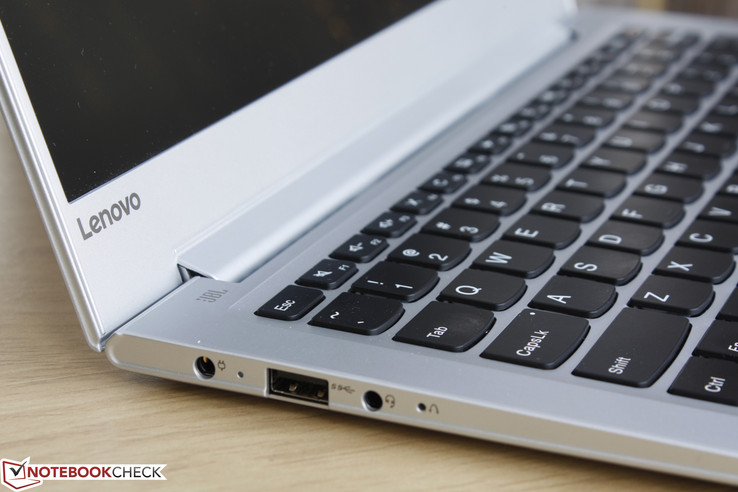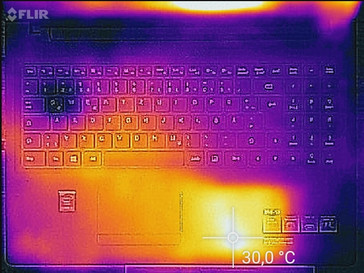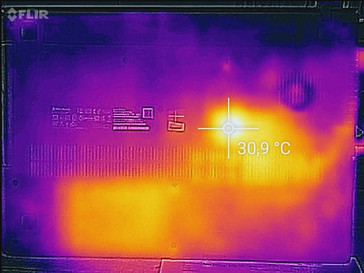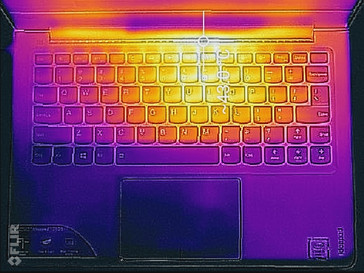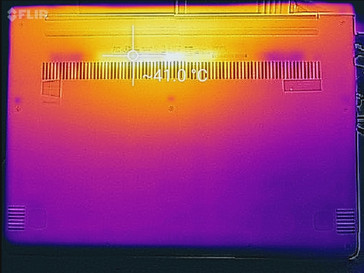Face Off: Asus X302UV vs. HP Envy 13 vs. Lenovo IdeaPad 710S

The 13-inch space is filled with plenty of options for users looking into mainstream or high-end solutions. Our comparison this week focuses on three mainstream subnotebooks retailing for under $1000 USD each to be noticeably cheaper than the popular XPS 13, Spectre 13, Yoga 900, and other well-known flagship subnotebooks. These less expensive alternatives may not look as pretty or have as many fancy features as some costlier solutions, but they're still light and portable with enough processing power for standard day-to-day workloads.
We encourage users to check out our dedicated review pages below for more data and detailed analyses of each of the three models. This comparison is by no means a replacement, but a condensed aid for those on the fence.
Case
Case quality is overall average between these three systems. First, the Asus is completely plastic with textured surfaces made to mimic brushed aluminum and is the most well-rounded build. The Envy 13 is perhaps the most attractive with its premium aluminum design, but it's overall more flexible around the base and lid. The Lenovo is similar as well because of its extra-narrow bezels, so users must be even more careful not to flex the display.
As for size and weight, the Asus is heavier and larger by far and is even over twice the thickness of the Envy 13. Its sheer size gives the notebook a more balanced build quality from top to bottom with other benefits as well as shown in our Performance and Emissions sections. Meanwhile, the IdeaPad 710S is the lightest and most portable because of its reduced length and width despite being just slightly thicker than the Envy 13.
Connectivity
Available ports are fairly limited due to the sizes of these 13-inch notebooks. The Asus X302UV offers more features thanks to its thicker design with VGA, full-size HDMI, and RJ-45. The Lenovo is on the other end of the spectrum with fewer USB ports, no RJ-45, and a micro-HDMI port that will require an adapter or special cable to use. None of the three notebooks are shipping with USB Type-C ports.
| Asus X302UV | HP Envy 13 | Lenovo IdeaPad 710S | |
| USB | 1x USB 3.0, 2x USB 2.0 | 3x USB 3.0 | 2x USB 3.0 |
| Video-out | 1x VGA, 1x HDMI | 1x HDMI | 1x micro-HDMI |
| Audio | Headphone jack | Headphone jack | Headphone jack |
| Other | Gigabit RJ-45, SD reader, Kensington Lock | SD reader, Kensington Lock | SD reader |
| Storage Bays | 1x 2.5-inch SATA III | 1x M.2 | 1x M.2 |
Input Devices
The typing experience is far from perfect on these three models. Feedback is spongier on both the Asus and HP while the former doesn't even include a backlight option. The keys on the HP can flex with enough applied force and travel on the Lenovo feels just as shallow. These are all characteristics of most Ultrabooks, so the short travel and soft feedback should be of no surprise to most users. The XPS 13 and ThinkPad AccuType keyboards continue to be our favorites in terms of comfort in this size category.
As for the integrated touchpads, the one of the Asus is easier to use as the Lenovo requires more force when inputting a mouse click. The HP can feel uneven towards the upper half of its touchpad surface, so users are likely to accidentally input a left click when using the HP. The slightly larger surface of the Asus touchpad gives the notebook a slight edge over its two competitors.
Display
The panels here are all from different manufacturers resulting in very different color gamuts and contrast levels. The Asus sports the worse display by far with its low 768p resolution panel, dimmer backlight brightness, and more limited color space from its TN panel. The Envy 13 with the higher 1800p display option utilizes a RGBW subpixel array for improved color accuracy at the cost of high black levels. Note that the same notebook with the less expensive 1080p SKU option is superior to the 1800p configuration in terms of contrast and brightness without sacrificing gamut. The Lenovo panel is similar to the Envy 13 1080p SKU, but we recommend a quick calibration of these panels to obtain more accurate grayscale and balanced color profiles.
| Asus X302UV | HP Envy 13-d000ng | HP Envy 13-d020ng | Lenovo IdeaPad 710S | |
| Size | 13.3-inch TN matte | 13.3-inch IPS glossy | 13.3-inch IPS matte | 13.3-inch IPS matte |
| Native Resolution | 1366 x 768 | 3200 x 1800 | 1920 x 1080 | 1920 x 1080 |
| Pixel Density | 118 PPI | 276 PPI | 166 PPI | 166 PPI |
| Panel ID | InfoVision M133NWN1 R3 | Samsung SDC415A | AU Optronics AUO272D | Sharp LQ133M1JW15 |
| Asus X302UV-FN016T | HP Envy 13-d000ng | HP Envy 13-d020ng | Lenovo IdeaPad 710S-13ISK 80SW0031US | |
|---|---|---|---|---|
| Display | ||||
| Display P3 Coverage (%) | 48.37 | 64 | 63.7 | 65.9 |
| sRGB Coverage (%) | 72.6 | 88.8 | 93 | 97 |
| AdobeRGB 1998 Coverage (%) | 49.98 | 65 | 65.1 | 68 |
| Response Times | ||||
| Response Time Grey 50% / Grey 80% * (ms) | 42 ? | 37.6 ? | 34 ? | 56 ? |
| Response Time Black / White * (ms) | 23 ? | 26 ? | 24 ? | 44 ? |
| PWM Frequency (Hz) | 50 ? | 1316 ? | 208 ? | 219.3 ? |
| Screen | ||||
| Brightness middle (cd/m²) | 218 | 291 | 345 | 349 |
| Brightness (cd/m²) | 210 | 276 | 335 | 339 |
| Brightness Distribution (%) | 88 | 82 | 95 | 88 |
| Black Level * (cd/m²) | 0.5 | 0.63 | 0.25 | 0.393 |
| Contrast (:1) | 436 | 462 | 1380 | 888 |
| Colorchecker dE 2000 * | 3.89 | 2.76 | 4.94 | 6.85 |
| Colorchecker dE 2000 max. * | 7.11 | 8.85 | 10.27 | |
| Greyscale dE 2000 * | 4.9 | 2.61 | 5.85 | 6.43 |
| Gamma | 2.41 91% | 2.31 95% | 2.25 98% | 1.83 120% |
| CCT | 7860 83% | 6731 97% | 7105 91% | 7820 83% |
| Color Space (Percent of AdobeRGB 1998) (%) | 46 | 57.5 | 60 | 61.9 |
| Color Space (Percent of sRGB) (%) | 73 | 88.7 | 93 | 97.3 |
| Total Average (Program / Settings) |
* ... smaller is better
Performance
CPU Performance
Asus, HP, and Lenovo offer multiple ULV CPU options on their respective notebooks, so our comparison below is only between the models we have on hand. This includes two SKUs of the IdeaPad 710S with the mid-range Core i5-6200U and the higher-end Core i7-6560U CPU.
CineBench benchmarks show the higher-specced IdeaPad 710S outperforming the i5-6200U in the other notebooks by about 10 to 15 percent. 3DMark Cloud Gate Physics shows a similar performance gap between them while Fire Strike Physics shows no performance differences.
As for serviceability, the three notebooks are not the easiest to access. The Envy 13 and IdeaPad 710S both have hidden screws under their rubber feet and may require a sharp edge to pry out their bottom panels. The Asus notebook is even more involved as the top shell of the base must first be removed before the bottom panel can be carefully opened.
See our dedicated CPU pages on the Core i5-6200U and Core i7-6560U for more benchmarks and comparisons.
| Asus X302UV | HP Envy 13 | Lenovo IdeaPad 710S (Core i5) | Lenovo IdeaPad 710S (Core i7) | |
| CPU | 2.3 GHz Core i5-6200U | 2.3 GHz Core i5-6200U | 2.3 GHz Core i5-6200U | 2.2 GHz Core i7-6560U |
| TDP | 15 W | 15 W | 15 W | 15 W |
| RAM | 8 GB DDR3-1600 (4 GB in 1x SODIMM + 4 GB soldered), Dual-Channel | 4 GB DDR3L-1600 soldered, Dual-Channel | 8 GB LPDDR3 soldered, Dual-Channel | 8 GB LPDDR3 soldered, Dual-Channel |
| GPU | GeForce 920MX | HD Graphics 520 | HD Graphics 520 | Iris Graphics 540 |
| Cinebench R11.5 | |
| CPU Single 64Bit (sort by value) | |
| HP Envy 13-d020ng | |
| Lenovo IdeaPad 710S-13ISK 80SW0031US | |
| CPU Multi 64Bit (sort by value) | |
| HP Envy 13-d020ng | |
| Lenovo IdeaPad 710S-13ISK 80SW0031US | |
| wPrime 2.10 | |
| 1024m (sort by value) | |
| Lenovo IdeaPad 710S-13ISK 80SW0031US | |
| 32m (sort by value) | |
| Lenovo IdeaPad 710S-13ISK 80SW0031US | |
| Super Pi Mod 1.5 XS 32M - 32M (sort by value) | |
| Lenovo IdeaPad 710S-13ISK 80SW0031US | |
| 3DMark | |
| 1280x720 offscreen Ice Storm Unlimited Physics (sort by value) | |
| Asus X302UV-FN016T | |
| Lenovo IdeaPad 710S-13ISK 80SW0031US | |
| 1920x1080 Ice Storm Extreme Physics (sort by value) | |
| Asus X302UV-FN016T | |
| Lenovo IdeaPad 710S-13ISK 80SW0031US | |
| 1280x720 Cloud Gate Standard Physics (sort by value) | |
| Asus X302UV-FN016T | |
| HP Envy 13-d020ng | |
| Lenovo IdeaPad 710S-13ISK 80SW0031US | |
| Lenovo IdeaPad 710S-13ISK | |
| 1920x1080 Fire Strike Physics (sort by value) | |
| Asus X302UV-FN016T | |
| HP Envy 13-d020ng | |
| Lenovo IdeaPad 710S-13ISK 80SW0031US | |
| Fire Strike Extreme Physics (sort by value) | |
| Asus X302UV-FN016T | |
| Lenovo IdeaPad 710S-13ISK 80SW0031US | |
| PCMark 7 | |
| Score (sort by value) | |
| Asus X302UV-FN016T | |
| Lightweight (sort by value) | |
| Asus X302UV-FN016T | |
| Productivity (sort by value) | |
| Asus X302UV-FN016T | |
| Entertainment (sort by value) | |
| Asus X302UV-FN016T | |
| Creativity (sort by value) | |
| Asus X302UV-FN016T | |
| Computation (sort by value) | |
| Asus X302UV-FN016T | |
| System Storage (sort by value) | |
| Asus X302UV-FN016T | |
| PCMark 8 | |
| Work Score Accelerated v2 (sort by value) | |
| Asus X302UV-FN016T | |
| HP Envy 13-d020ng | |
| Lenovo IdeaPad 710S-13ISK 80SW0031US | |
| Lenovo IdeaPad 710S-13ISK | |
| Creative Score Accelerated v2 (sort by value) | |
| Asus X302UV-FN016T | |
| HP Envy 13-d020ng | |
| Lenovo IdeaPad 710S-13ISK 80SW0031US | |
| Home Score Accelerated v2 (sort by value) | |
| Asus X302UV-FN016T | |
| HP Envy 13-d020ng | |
| Lenovo IdeaPad 710S-13ISK 80SW0031US | |
| Lenovo IdeaPad 710S-13ISK | |
| X264 HD Benchmark 4.0 | |
| Pass 1 (sort by value) | |
| Lenovo IdeaPad 710S-13ISK 80SW0031US | |
| Pass 2 (sort by value) | |
| Lenovo IdeaPad 710S-13ISK 80SW0031US | |
* ... smaller is better
GPU Performance
The HD Graphics 520 GPUs in both the HP and Core i5 Lenovo SKU are essentially identical in performance according to 3DMark and Bioshock Infinite benchmarks. Both the GeForce 920MX and integrated Iris Graphics 540 offer much faster graphics performance than the HD Graphics 520.
When comparing the Iris Graphics 540 GPU to the GeForce 920MX, however, there is no clear-cut winner. 3DMark 11 and Cloud Gate results show the Intel GPU running ahead of the Nvidia solution while Fire Strike favors the Nvidia GPU. The gap may be attributed to the lower resolution of the Asus compared to the Lenovo. Otherwise, the Bioshock Infinite benchmark shows both GPUs neck-to-neck in frame rates.
See our dedicated GPU page on the GeForce 920MX, HD Graphics 520, and Iris Graphics 540 for additional benchmarks and comparisons.
| 3DMark 11 - 1280x720 Performance GPU (sort by value) | |
| Asus X302UV-FN016T | |
| HP Envy 13-d020ng | |
| Lenovo IdeaPad 710S-13ISK 80SW0031US | |
| Lenovo IdeaPad 710S-13ISK | |
| Cinebench R15 - OpenGL 64Bit (sort by value) | |
| Asus X302UV-FN016T | |
| HP Envy 13-d020ng | |
| Lenovo IdeaPad 710S-13ISK 80SW0031US | |
| 3DMark | |
| 1920x1080 Fire Strike Graphics (sort by value) | |
| Asus X302UV-FN016T | |
| HP Envy 13-d020ng | |
| Lenovo IdeaPad 710S-13ISK 80SW0031US | |
| Fire Strike Extreme Graphics (sort by value) | |
| Asus X302UV-FN016T | |
| Lenovo IdeaPad 710S-13ISK 80SW0031US | |
| 1280x720 Cloud Gate Standard Graphics (sort by value) | |
| Asus X302UV-FN016T | |
| HP Envy 13-d020ng | |
| Lenovo IdeaPad 710S-13ISK 80SW0031US | |
| Lenovo IdeaPad 710S-13ISK | |
| 1920x1080 Ice Storm Extreme Graphics (sort by value) | |
| Asus X302UV-FN016T | |
| Lenovo IdeaPad 710S-13ISK 80SW0031US | |
| 1280x720 Ice Storm Standard Graphics (sort by value) | |
| Asus X302UV-FN016T | |
| HP Envy 13-d020ng | |
| Lenovo IdeaPad 710S-13ISK 80SW0031US | |
| Lenovo IdeaPad 710S-13ISK | |
| BioShock Infinite | |
| 1280x720 Very Low Preset (sort by value) | |
| Asus X302UV-FN016T | |
| HP Envy 13-d020ng | |
| Lenovo IdeaPad 710S-13ISK 80SW0031US | |
| Lenovo IdeaPad 710S-13ISK | |
| 1366x768 Medium Preset (sort by value) | |
| Asus X302UV-FN016T | |
| HP Envy 13-d020ng | |
| Lenovo IdeaPad 710S-13ISK 80SW0031US | |
| Lenovo IdeaPad 710S-13ISK | |
| 1366x768 High Preset (sort by value) | |
| Asus X302UV-FN016T | |
| HP Envy 13-d020ng | |
| Lenovo IdeaPad 710S-13ISK 80SW0031US | |
| Lenovo IdeaPad 710S-13ISK | |
Stress Test
To test system stability, we run both Prime95 and FurMark to simulate maximum stress. These unrealistic conditions do not represent daily workloads, but are instead meant to put both the CPU and GPU at 100 percent capacity.
The Asus notebook performs the best when under extreme loads with no CPU or GPU throttling. Core temperatures are fairly low as well at the mid 60 C to 70 C range. The HP runs the warmest at just under 80 C with the CPU throttling down to 2.0 GHz and below. Throttling is even more severe on the Lenovo SKUs, but core temperatures subsequently stabilize at a much lower range.
Our authors for the Envy 13 and IdeaPad 710S (i7-6560U) did not provide GPU clock rates when the systems were subjected to extreme loads.
| Asus X302UV | HP Envy 13 | Lenovo IdeaPad 710S (Core i5) | Lenovo IdeaPad 710S (Core i7) | |
| Processor | Core i5-6200U | Core i5-6200U | Core i5-6200U | Core i7-6560U |
| Rated GPU Core Clock (MHz) | 965 - 993 | 300 - 1000 | 300 - 1000 | 300 - 1050 |
| Stable GPU Core Clock on FurMark (MHz) | 993 | -- | 750 | -- |
| Rated CPU Core Clock (GHz) | 2.3 | 2.3 | 2.3 | 2.2 |
| Stable CPU Core Clock on Prime95 (GHz) | 2.7 | 1.7 - 2.0 | 1.2 | 0.7 |
| Average CPU temperature (C) | 74 | 77 - 80 | 61 | 62 |
| Average GPU temperature (C) | 65 | -- | -- | -- |
Emissions & Energy
System Noise & Temperature
While the Lenovo SKUs are quiet when under very low or idling loads, the fans in the HP and Asus notebooks are always active no matter the workload. Thus, expect a quiet whir from these two model whenever they are powered on. The thicker Asus utilizes just a single system fan compared to two each on the HP and Lenovo.
Higher loads like gaming will increase fan noise most significantly on the IdeaPad 710S SKU with the more powerful Core i7-6560U CPU. This configuration reaches almost 40 dB(A) to be noticeably louder than its two competitors and even the lower-specced IdeaPad 710S, so the GPU boost when moving to Iris graphics comes at a cost. It's interesting to note that the fan in the Asus is apathetic to onscreen loads with a very low maximum RPM. This means less pulsing and more steady system noise when compared to the HP and Lenovo units.
As for surface temperatures, the thinner Envy 13 is the warmest at about 50 C on its warmest spots when under extreme loads compared to around 40 C on both the Asus and Lenovo. This correlates with the warmer running core temperatures of the HP.
| Asus X302UV-FN016T | HP Envy 13-d020ng | Lenovo IdeaPad 710S-13ISK 80SW0031US | Lenovo IdeaPad 710S-13ISK | |
|---|---|---|---|---|
| Noise | ||||
| off / environment * (dB) | 31.2 | 29.5 | 29 | |
| Idle Minimum * (dB) | 32.9 | 32.5 | 29.5 | 30.1 |
| Idle Average * (dB) | 32.9 | 32.5 | 29.5 | 30.1 |
| Idle Maximum * (dB) | 33 | 32.4 | 29.5 | 30.1 |
| Load Average * (dB) | 33 | 36 | 34.2 | 39.2 |
| Load Maximum * (dB) | 34.6 | 36.5 | 34.4 | 39.3 |
* ... smaller is better
Power Consumption
Our power readings reveal interesting characteristics between different configurations and SKUs. When idling, the Envy 13 QHD SKU appears to draw more power than the other two competitors even when compared to the IdeaPad 710S with the more powerful Core i7-6560U. When under load, however, this same Lenovo SKU becomes the more demanding system with a draw of about 36 W to 44 W compared to 30 W to 40 W from SKUs limited to the HD Graphics 520 GPU. The Asus draws about as much power as the more powerful Lenovo SKU when under extreme loads.
| Asus X302UV-FN016T GeForce 920MX, 6200U, Hynix HFS128G3MND | HP Envy 13-d000ng HD Graphics 520, 6200U, Samsung SSD PM851 256 GB MZNTE256HMHP | HP Envy 13-d020ng HD Graphics 520, 6200U, Samsung MZRPC256HADR-000SO | Lenovo IdeaPad 710S-13ISK 80SW0031US HD Graphics 520, 6200U, Samsung MZNLN128HCGR-000L2 | Lenovo IdeaPad 710S-13ISK Iris Graphics 540, 6560U, Samsung PM951 NVMe MZVLV256 | |
|---|---|---|---|---|---|
| Power Consumption | |||||
| Idle Minimum * (Watt) | 3.3 | 5.4 | 4.2 | 4.8 | 3.3 |
| Idle Average * (Watt) | 5.1 | 10.1 | 7.4 | 7.7 | 7.4 |
| Idle Maximum * (Watt) | 5.2 | 11.1 | 10.1 | 7.9 | 8.2 |
| Load Average * (Watt) | 29.5 | 32.1 | 33.4 | 25.8 | 36.5 |
| Load Maximum * (Watt) | 44 | 40.1 | 34.7 | 38.1 | 43.7 |
* ... smaller is better
Battery Life
Runtimes are longer on the Lenovo system followed by the Asus and the HP. All three models are relatively close in battery life save for the Envy 13 QHD SKU where WLAN runtimes are about an hour shorter than its FHD SKU under similar conditions. The battery packs are integrated and non-removable for each of these models.
The chart does not specify, but the numbers below represent minutes before automatic shutdown from a full charge.
| Asus X302UV-FN016T 38 Wh | HP Envy 13-d000ng 45 Wh | HP Envy 13-d020ng 45 Wh | Lenovo IdeaPad 710S-13ISK 80SW0031US 46 Wh | Lenovo IdeaPad 710S-13ISK 46 Wh | |
|---|---|---|---|---|---|
| Battery runtime | |||||
| WiFi v1.3 (h) | 6.5 | 5.4 | 6.4 | 7.2 | 7 |
| Reader / Idle (h) | 8.6 | 15.1 | 13.5 | ||
| Load (h) | 1.8 | 1.5 | 1.5 |
Verdict
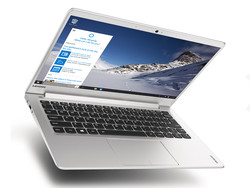
The IdeaPad 710S is an easier recommendation over the X302UV and the Envy 13 for several reasons. Not only is it lighter and smaller than the Asus or HP, its battery life is slightly longer than both as well. There are no sacrifices made to display quality as it is just as bright as the 1080p Envy 13 SKU with good contrast levels and deep colors. Main disadvantages include more severe CPU throttling, weaker lid, higher fan noise for the i7-6560U SKU, and fewer connectivity ports. The Envy 13 comes close and is a good alternative save for its disappointing 1800p SKU where contrast levels and battery runtimes are significantly lower.
The Asus system does not offer enough in terms of features and performance to justify its thicker build and heavier weight. It runs much quieter under load with no throttling and includes more connectivity features such as VGA, but its poor 768p display is a deal breaker.
| Asus X302UV | HP Envy 13 | Lenovo IdeaPad 710S |
|---|---|---|
+ More rigid lid + VGA and HDMI + Larger, more comfortable clickpad + No CPU or GPU throttling when under extreme stress + Quieter fan noise when under load | + Lightweight and thinner; aluminum construction + Higher resolution glossy options | + Smaller and more lightweight; aluminum construction + Full-size Arrow keys + Deeper contrast, wider color gamut, brighter display backlight + Cooler core temperatures when under load + System fans silent under low loads |
- Thicker and heavier; plastic construction - More involved serviceability - No keyboard backlight - Dimmer display backlight, lower resolution, narrower color space; lower contrast - System fan always active | - More susceptible to twisting and bending - No RJ-45 - Lower contrast (for RGBW panel) - Inferior GPU performance - Warmer core temperatures under load - System fans always active - Shorter battery life (QHD SKU) | - Susceptible to twisting and bending, especially of the lid - Micro-HDMI port will require an adapter - No RJ-45 or Kensington Lock; fewer USB ports - More severe CPU throttling when under load - Louder fan noise when under load (i7-6560U SKU) |
Asus X302UV
Price comparison
HP Envy 13
Price comparison
Lenovo IdeaPad 710S
Price comparison
See more quick comparisons in our Face Off series:
- Dell XPS 15 vs. Apple MacBook Pro 15 vs. Asus ZenBook Pro UX501
- Aorus X3 Plus vs. Gigabyte P34W vs. Razer Blade 14
- Dell XPS 13 vs. Apple MacBook Pro 13 vs. Asus ZenBook UX305
- HP EliteBook 820 G2 vs. Lenovo ThinkPad X250 vs. Dell Latitude 12 E7250
- Asus ROG G751 vs. Dell Alienware 17 vs. MSI GT72 Dominator
- Lenovo ThinkPad T450 vs. Acer TravelMate P645 vs. Dell Latitude 14 E5450
- Dell Alienware 15 vs. Clevo P751ZM vs. MSI GE62
- Acer Aspire V17 Nitro vs. Asus N751 vs. HP Envy 17
- Samsung Galaxy Tab S 8.4 vs. Sony Xperia Z3 Compact vs. Dell Venue 8 7000
- Asus EeeBook X205TA vs. Lenovo S20 vs. Acer Aspire ES1
- Microsoft Surface Pro 3 vs. Asus Transformer Book T300 Chi vs. Toshiba Portege Z20t
- Lenovo ThinkPad Edge E550 vs. Acer Aspire E5 vs. HP ProBook 450 G2
- HP Pavilion 15 vs. Lenovo IdeaPad Z50 vs. Toshiba Satellite S50
- Apple MacBook Air 13 2015 vs. Samsung ATIV Book 9 900X3G vs. Asus ZenBook UX303
- Asus ROG G501 vs. Lenovo Y50 vs. Acer Aspire V15 Nitro
- OnePlus 2 vs. Honor 6 Plus vs. Motorola Moto X Play
- Lenovo Yoga 500 vs. Dell Inspiron 15 7000 vs. Toshiba Satellite Radius 15
- Apple iPhone 6S Plus vs. Huawei Mate S vs. LG G4
- Dell Inspiron 15 5558 vs. Lenovo Z51 vs. Acer Aspire V3 574G
- MSI GT72S vs. Asus G752 vs. Clevo P870DM
- Microsoft Surface Book vs. Dell XPS 13 InfinityEdge vs. Apple MacBook Pro Retina 13
- Microsoft Surface Pro 4 Core i7 vs. Surface Pro 4 Core i5 vs. Surface Pro 4 Core m3
- Lenovo Yoga 900 vs. HP Spectre x360 13 vs. Dell Inspiron 13 7348
- Lenovo ThinkPad T450s vs. HP EliteBook Folio 1040 G2 vs. Dell Latitude 14 E7450
- Asus GL552JX vs. Acer Aspire V15 Nitro VN7 vs. MSI GP62 2QE
- MSI WT72 vs. Lenovo ThinkPad P70 vs. HP ZBook 17 G2
- Microsoft Surface Pro 4 vs. HP Spectre x2 12 vs. Fujitsu Stylistic Q665
- Dell XPS 13 9350 vs. XPS 13 9343 vs. XPS 13 9333
- Lenovo Ideapad Y700 15ISK vs. Gigabyte P55W v5 vs. Dell XPS 15 9550
- Lenovo ThinkPad X260 vs. Dell XPS 12 9250 vs. Razer Blade Stealth
- Lenovo ThinkPad X1 Carbon vs. HP EliteBook Folio 1040 G3 vs. Dell Latitude 14 E7470
- Aorus X5S v5 vs. MSI GS60 6QE vs. Acer Predator 15
- Lenovo ThinkPad 13 vs. Acer Aspire S 13 vs. HP Spectre 13
- Toshiba Tecra Z40 vs. Acer TravelMate P648 vs. HP EliteBook 840 G3
- Apple MacBook 12 Core m3, Core m5, and Core m7
- Lenovo Yoga 3 Pro 13 vs. Asus Zenbook UX360CA vs. Dell Inspiron 13
- MSI GT73VR vs. Asus G752VS vs. Alienware 17 R3
- Lenovo ThinkPad T460s vs. ThinkPad X1 Yoga vs. ThinkPad Yoga 460




